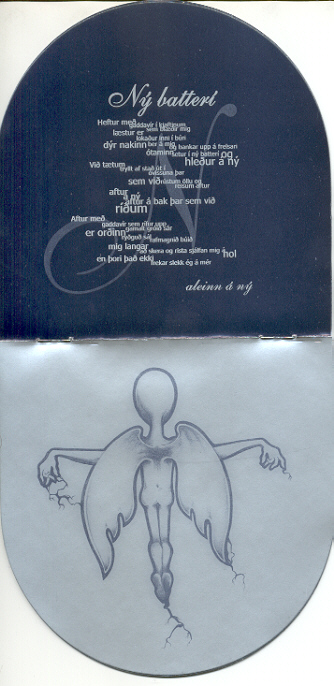

It is a sound designed to overwhelm, and it does, which is probably how British critics ended up gasping that the music was “ like God weeping tears of gold in heaven.” Music of this scale is never kind on the higher faculties. It is thunderous and dreamy, soothing and stirring-a big, frosted wedding cake of mallet percussion and pianos and strings and piping, cooing vocals. Birgisson played his electric guitar with a cello bow, which offered the sonorous tones of feedback without the disturbance of picks. The drums are nested inside so much reverb that you can nearly hear the air gathering around the snare head before impact. It is a long, liquid sound, devoid of sharp points: Even the most massive dynamic shifts happen with rounded edges. The distance between the quietest noises-the little cymbals ticking the eight notes on “Svefn-g-englar,” Birgisson’s falsetto-and the loudest ones-say, the drums and organ that land like Thor’s hammer about six minutes into the same track-feels measurable only in miles. Their enormous sound came not from size, but from scale. With Thomas, they built a record that felt like being stuck inside a church bell. He also mixed the first record by Björk’s early band the Sugarcubes, which is what led him to Sigur Rós. They enlisted producer Ken Thomas, who started out as an assistant working on Queen albums before moving on to early industrial acts like Throbbing Gristle and Einstürzende Neubauten. To make the album itself, they recruited a keyboardist named Kjartan Sveinsson, who knew a lot more than they did about the things they were interested in-arrangements, composition, songs that sounded like cavernous day spas. But when it all happened to Sigur Rós, it was all pretty new, and it was all happening to the music industry at the same time.

Today, Sigur Rós’ career seems like a natural and desirable trajectory: Get your music into the ears of some important people (in Sigur Rós’ case, it was celebrities like Brad Pitt and Gwyneth Paltrow) from there, your music might shoot outward into some large-scale and modestly experimental commercial film (Tom Cruise and Cameron Crowe’s Vanilla Sky) and then it can rain down into dozens and dozens of television shows via the diligent work of music supervisors. It’s hard to know if Ágætis byrjun catalyzed the massive shifts that unfolded in its wake, or if those shifts were already brewing, in search of a seaworthy vessel to carry us wherever it was going. They even appeared on “The Simpsons.” Twenty years into their career, they tour arenas and command a massive following. They opened for Radiohead they turned down a slot on “Letterman” because the host wouldn’t give them enough time. After Ágætis, the sound-massive, surging, triumphal melancholic and soothing and mostly major-key wreathed in strings and horns and ripe with melodrama and headlocking you into transcendence-is a global phenomenon. It is an album that has terraformed our landscape-so much of our lives now sounds like it, from Nissan commercials to “Planet Earth” documentaries to the long trail of ads that could not procure Sigur Rós’ approval and went about constructing benign replicas of Sigur Rós songs instead.īefore Ágætis, post-rock was a niche concern, a tiny sub-sub-genre centered around a dozen or so bands in England and North America- Stereolab, Bark Psychosis and a few others in London Tortoise and Gastr del Sol in Chicago Godspeed You! Black Emperor in Montreal. If we now live in a world of small, soft drones, a pruned garden of “Lush Lofi” and “Ambient Chill” and “Ethereal Vibes” Spotify playlists, we can blame this condition, at least in part, on the impact of Ágætis byrjun. It’s alarming to consider, from the vantage of 2019, the degree to which he seems to have accomplished his mission. The singer posted a salvo on the band’s website prior to Agaetis’ release: “We are simply gonna change music forever, and the way people think about music.” But the dismal showing left no seeming dent on young Jónsi Birgisson’s confidence. Their first record, 1997’s Von, was dark and, by the standards of what they became famous for, positively screechy: Back then, they were inspired by the hurtling propulsion of Smashing Pumpkins and My Bloody Valentine, bands that generated soothing textures from cacophony. With their second album, Ágætis byrjun, Sigur Rós knew only that they wanted to make things bigger.


 0 kommentar(er)
0 kommentar(er)
